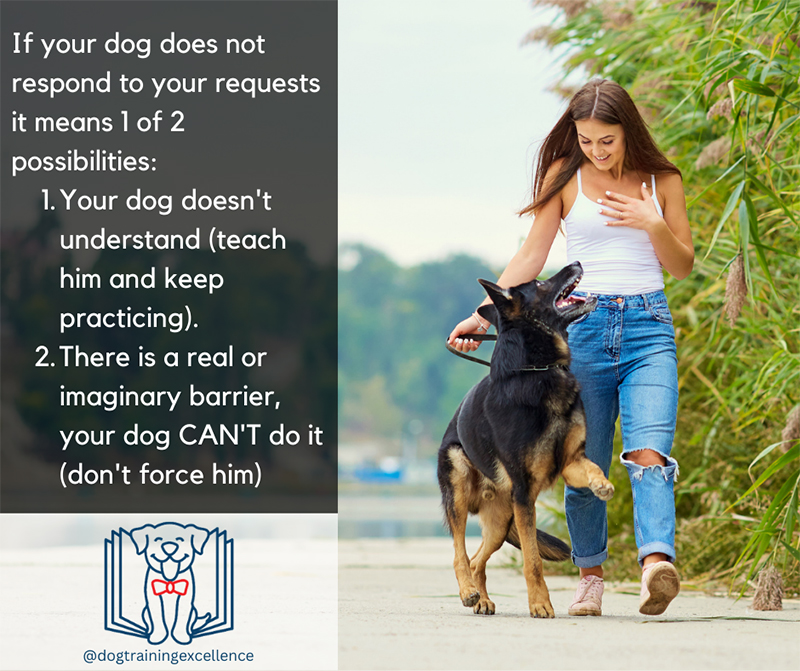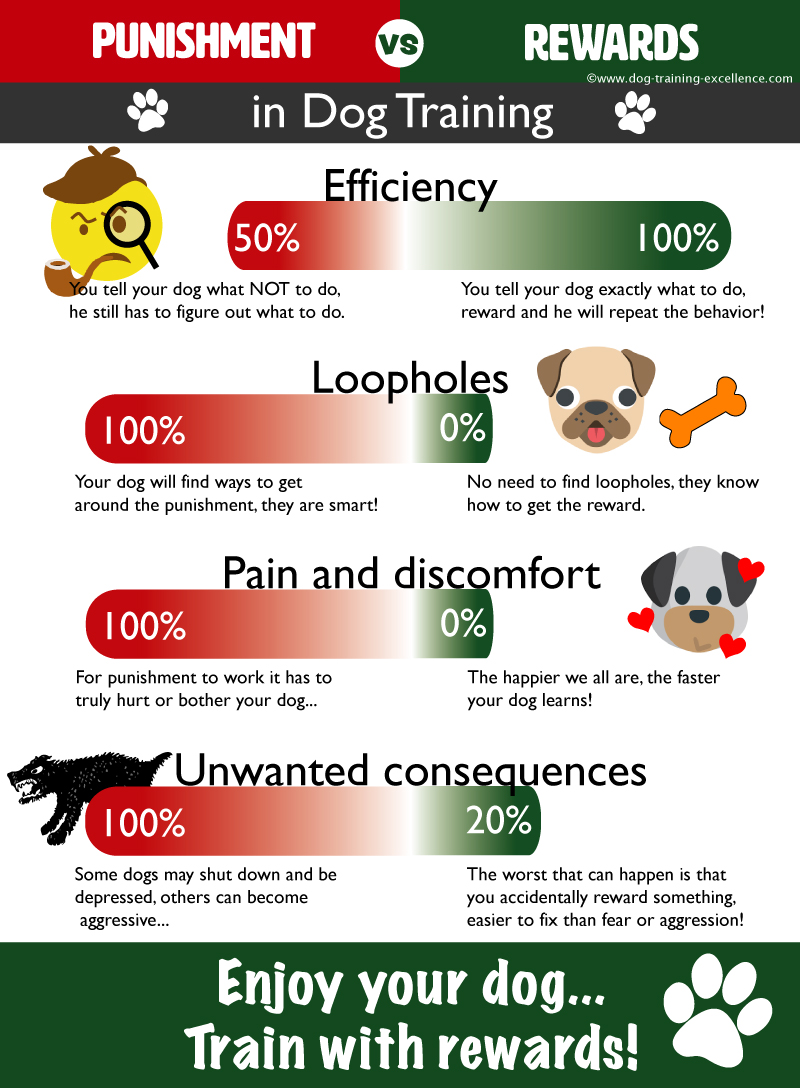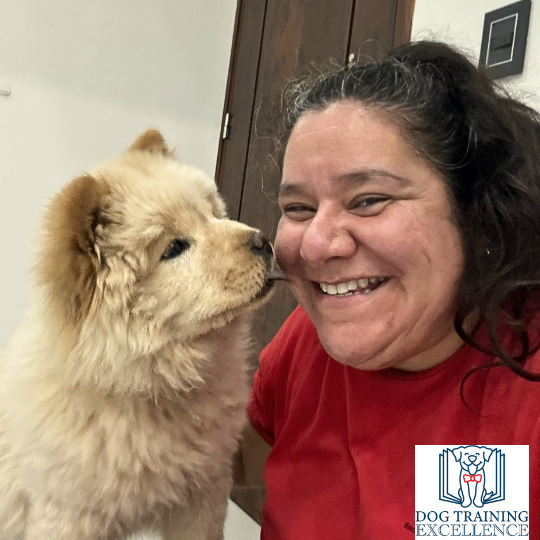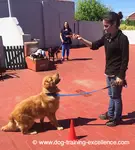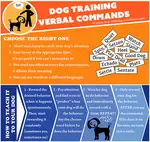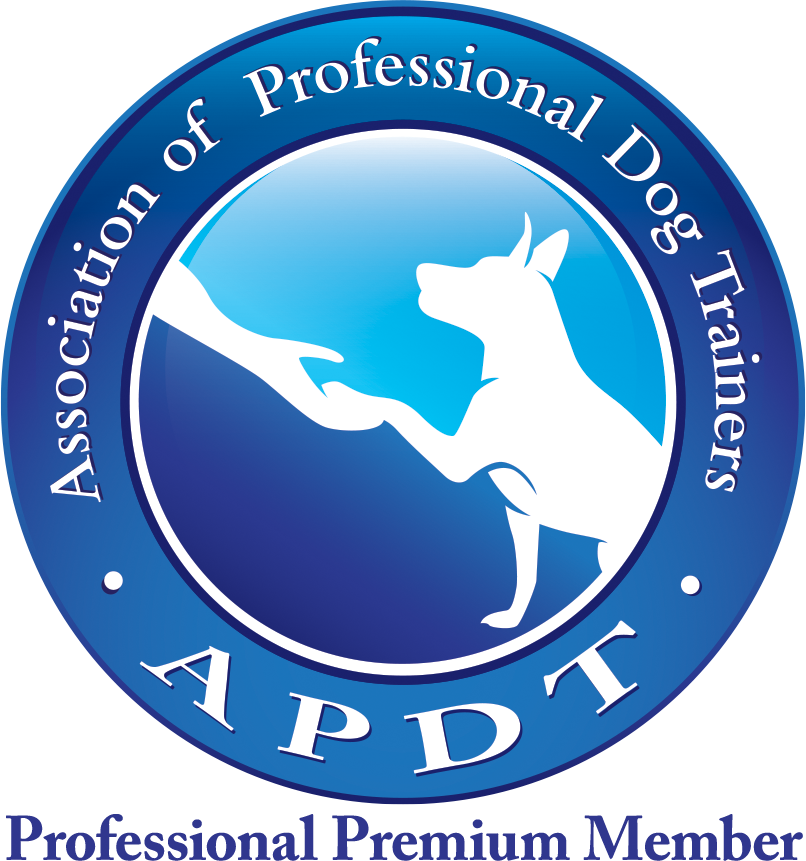I try to write my posts as unbiased as possible and recommend the products I consider to be useful and the best. I use affiliate links, this means that–at no extra cost to you–I can make a commission on a purchase you make after clicking on them. As an Amazon Associate I earn from qualifying purchases.
How to Train a Dog
the Right Way
Are you wondering how to train a dog? There is a lot of mixed information on the web and it can get very confusing. As a general rule, always follow positive methods and do not apply anything that makes you uncomfortable.
Whether it is potty training, leash training, manners, or even trying to help your aggressive dog, I will tell you the key concepts you need to know to overcome most dog behavior problems.
Once you understand the basics, you will be able to "talk" to your dog in a way he can understand. It is important that you practice and include everything you learn in your everyday interactions with your puppy. Practicing once in a while is not the way to do it.
To help your dog or puppy understand and follow your instructions you just need to learn to speak in a different way. It's intra-species communication. The trick is learning...well, universal learning: How do dogs learn? how do they communicate?
How to train a dog: is all about learning
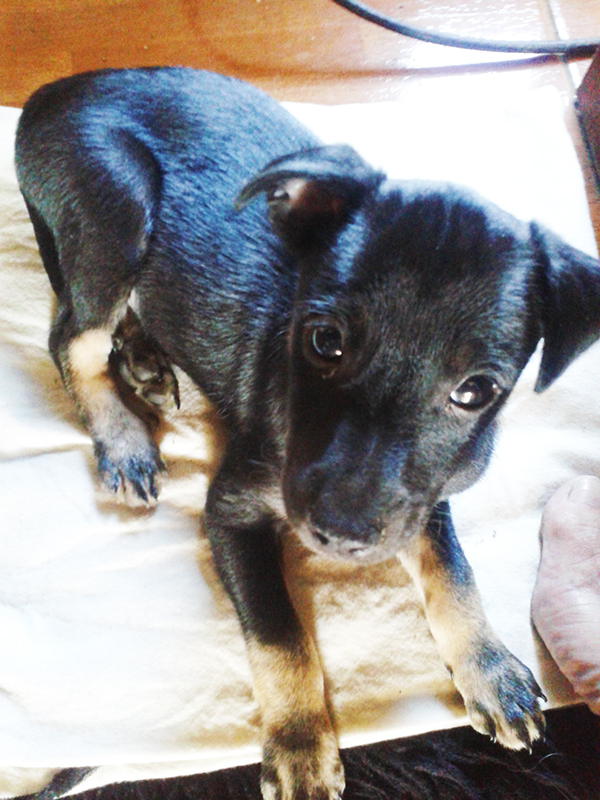
For many years scientist and psychologists have been studying about learning and memory. How do we, humans, learn? How do other animals learn? Is there a basic learning principle that applies to all living animals? Can I train a dog to do anything? Even though there is still much research going on, psychologist have discovered in the 50's that there are certain basic principles of learning that apply to all of us, including our dogs.
Some of these basic principles you may know as Classical Conditioning, Operant Conditioning and Extinction. The words sound complicated and I promise you the concepts are somewhat hard to grasp, but once you understand them, you will have the key to communicate with your dog. I invite you to click on each link to learn more about them.
If you do have a basic understanding of these principles, you may notice that animals can and will learn both with rewards and with punishment. And this explains why there is so much misinformation about how to train a dog. Both methods work. So, how to train a dog? with punishment, with rewards, with both?
The straight answer is: REWARDS
And here is why...
Why punishment is NOT the best option?
It's inefficient:
- When you punish an animal for something he did wrong, you are not giving him information about how to do it right! The dog must keep guessing without clues. Training with punishment will take longer.
When you use rewards, you are telling the animal exactly what it is that they did correctly and they will repeat that behavior to get more rewards!
For example: You are wondering how to train a dog to stop chewing on furniture. If you punish your dog for chewing the table legs, your dog will likely move onto the chair legs. If you punish your dog for chewing the chair legs, your dog will chew your shoes, if you punish your dog for chewing your shoes.... and so on and so forth.
Now the alternative: You see your dog chewing on the table legs, you redirect your dog to chew an appropriate toy. You play with your dog as a reward for chewing the toy. You repeat this every time your dog chews on something inappropriate >> Your dog will start choosing his toys to chew instead.
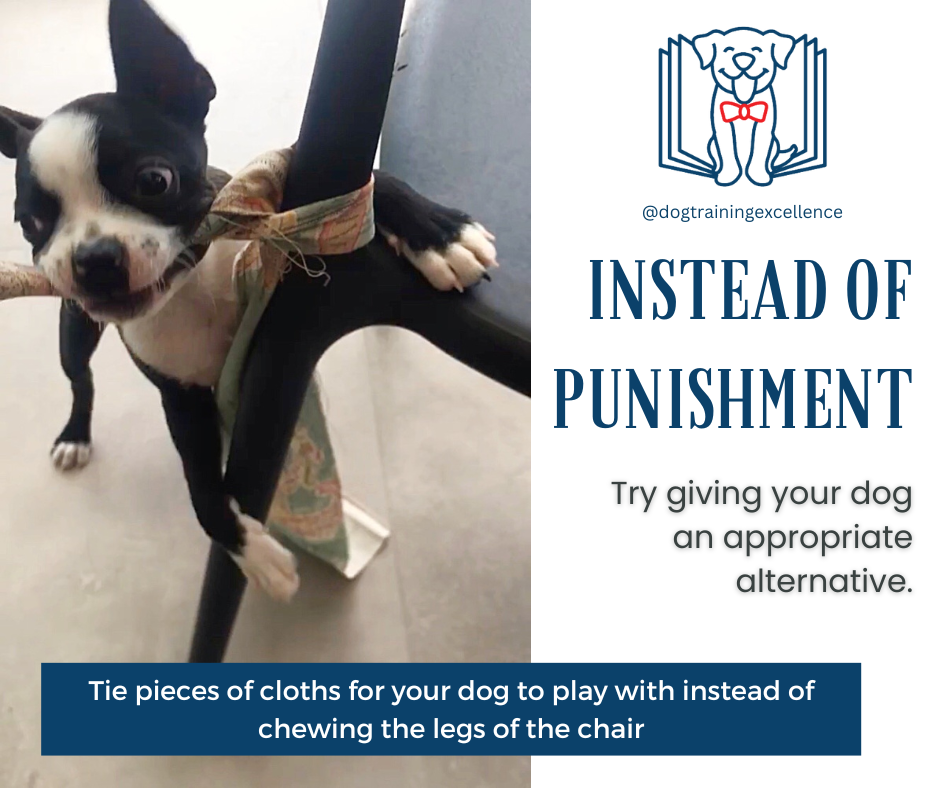
Your dog will find the loophole:
- Most animals are smart enough to find loopholes in rules taught by punishment. For example, dogs will learn to obey everything you say on leash, but as soon as the leash is off, they don't respond any longer.
When you use rewards you are creating a positive association with the correct behavior. You canine friend will want to do it even off-leash…and even without food! (Learn here how to use food treats the correct way).
Punishment must hurt or make the dog very uncomfortable:
- Most people can't give a true punishment because it is too harsh. For example, if the jerk on a leash was not hard enough! Would you give a harder one? Probably not, because you don't want to accidentally hurt your pet. In the end, our canine friends get many mild punishments that are not enough to stop the behavior.
Instead give a reward for the correct behavior. What if the reward is not good enough? would you go higher? Yes! because the worse that can happen is that you are just pampering your furry friend!
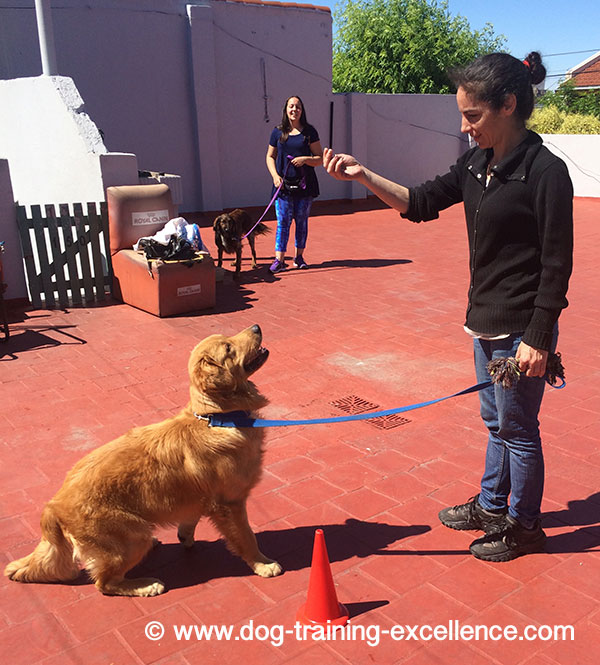
Punishment can fool you:
- The use of punishment makes us, humans, believe that it works when it really doesn't. For example, you jerk and the dog instantly stops pulling (this feels rewarding to us)…but he stops pulling only for a few seconds! (You were fooled). You were reinforced by jerking on the leash, you think it worked when it really didn't.
When you use rewards the right way, you will also be reinforced when you see the behavior you want happening more often!
Punishment may cause your dog to shut down or be aggressive:
- Punishment can cause dogs to shut down, be shy or use aggression themselves. If you keep punishing your pet because he can't get it right, the dog might shut down and stop responding at all. Imagine you are learning to play an instrument and the teacher slaps your hands when you do something wrong. How many classes do you think you will endure before giving up?
On the other hand some dogs might react aggressively when punished and this can put you in danger.
If you use rewards the exact opposite happens, your pet will feel joy during training sessions! He will actually feel joy in every aspect of his life. Positive reinforcement makes us and the animals feel good and learn at the same time!
"Reward-based training makes us and our dogs feel joy during training sessions. Eventually your dog will feel joy just by interacting with you"
That said I would like to make a clarification. You will be using punishment, mostly inadvertently. Punishment is defined as something that when given reduces the likelihood that the behavior will happen again. There are some things your dog might not like, for example, when you hug him or when you completely ignore him.
Focus on the positive way, rewarding good behavior. And as for punishment, yes...ignore your dog when he does something bad.
how to train a dog: different training methods
The principles of psychology mentioned above gave rise to different positive training methods or techniques. These training techniques can be used to actually teach dogs different things from signals to how to behave in different situations. You can click on the link to learn more about each method.
How to train a dog the right way? With positive training methods!
- Luring: Make your pet follow a piece of food to show him what to do.
- Capturing: Wait for your furry friend to do the right behavior and then praise him!
- Shaping: To train complex behaviors, reward your pet for different approximations to the end goal.
- Clicker Training: Use a noise maker to make communication even more clear.
- Targeting: Teach your pet the command touch and they, like luring, use it to show your dog what to do next.
You can use them all! Each one will be good for each different situation.
3 key elements when training your dog
How to train a dog? It's not about getting your dog to "obey", its about helping your dog "understand" and "choose" the right behaviors. There are 3 key elements you need to understand to successfully train your dog:
Management: You can (and should) change the environment to prevent your dog from doing what you don't like. For example:
- if your dog chews your shoes then put your shoes away. If your d
1. Management
You can (and should) change the environment to prevent your dog from doing what you don't like. For example:
- If your dog chews your shoes then put your shoes away.
- If your dog steals food from the counter, don't leave food unattended on the counter.
- If your dog barks at other dogs during walks, choose a time of the day where it is less likely for you to encounter another dog, change routes if needed.
- If you puppy pees all over the house, confine your puppy to a smaller area like a pen or the kitchen.
- You get the idea, right?
Management is technically not "training", because we are not actively teaching anything new to your dog. Why is management so important? Because management prevents your dog from -practicing- the unwanted behavior. The more your dog practices, the harder it will be to change it. It also provides a little bit of peace of mind for the owner while the dog learns a new behavior.
>> STEP 1: How can you arrange the environment or routine to prevent your dog from doing the unwanted behavior.
2. Give your dog what he/she needs
Many dog behavior problems start because your dog has a basic need that is being unmet. Most people know that dogs need food, water and good health (vet checks). However, dogs have may other needs:
- Physical exercise
- Mental exercise
- Social interactions
- The need to chew
- The need to use their sense of smell
- The need to play
- The need to spend time with you
- and many more...
When your dog's needs are not met, your dog will find a way to try to meet them, and you won't like his choices. This is technically not training either, you are not teaching anything new to your dog, but if your dog does not have his needs met, he won't be able to learn.
>> STEP 2: Is your dog's unwanted behavior due to an unmet need? If so, how can you fulfill that need in a way that is appropriate in the human world?
3. Teach your dog an alternative
Now we get into training...it's the 3rd step! Once you have put in place management and met all of your dog's needs it's time to train. And when we train our dogs our goal should be one:
Teach your dog an alternative behavior!
If the alternative behavior is INCOMPATIBLE with the unwanted behavior even better!
It seems simple enough but it can be tricky sometimes. Here is what you need to do:
- Describe the behavior you don't like (jumps up, chew, etc.)
- Think an alternative behavior
- Teach your dog the new behavior
- Reward your dog for choosing the new behavior instead
- Practice...practice...practice!
Here are some examples:
- My dog jumps up when I get home >> teach him to bring me a toy to play when I get home (instead of jumping up).
- My dog barks at other dogs during walks >> teach your dog to look at you for a treat every time another dog walks by.
- My dog barks and bothers guests at home >> teach your dog to relax on a mat with an interactive dog toy.
- My dog steals food while I cook >> teach your dog to sit calmly while you cook.
>> STEP 3: Can you think of a good alternative behavior to teach your dog? Now you can use the methods outlined earlier to teach him the new behavior.
- Home
- How to Train a Dog
